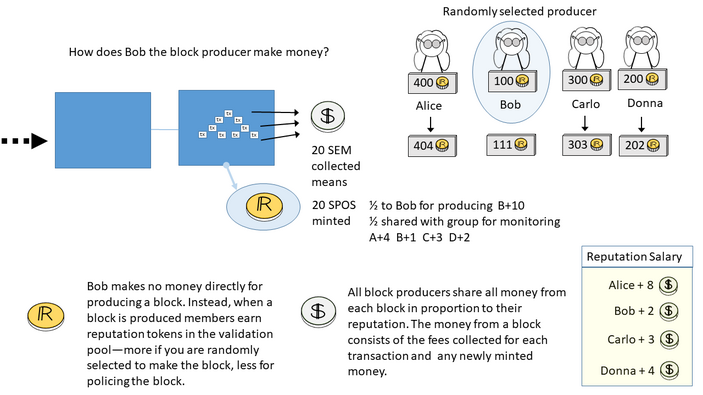Block producer DAO
Jump to navigation
Jump to search
DGF is used to govern the consensus mechanism for block production in blockchains. A fork of Ethereum (or any other open source blockchain) with the same consensus mechanism initiates the new blockchain. The difference is in governance. The fees are in the native token, ETH in the case of an Ethereum fork. Then REP is minted when a block is produced. Distribution of REP and ETH fees follow DGF flow:
- A block producer is a holder of REP. A producer signals their availability to produce blocks by encumbering their REP in the Availability smart contract (ASC).
- Previous blocks pseudorandomly select a producer from the active ASCs.
- The selected producer follows the current protocol for block production which is encoded in the current Work smart contract (WSC).
- When the block is finished it is posted to the Forum with the fees collected from the block, opening a Validation Pool (VPSC). The fees include any transaction fees and production taxes, which are newly minted ETH from that block.
- The VPSC mints new REP in proportion to the fees and encumbers the REP appropriately--default is 50% for the producer, 50% against the producer.
- The Bench of experts evaluate the block and stake their REP on the outcome.
- VPSC resolves the vote, distributing the REP to the winners in proportion to their stakes.
- VPSC distributes the fees to all members of the DAO in proportion to their REP holdings (REP salary).
- The new block producer is determined by the most recently validated WSC, which selects pseudorandomly from the active ASCs. (Steps 1 & 2.)
